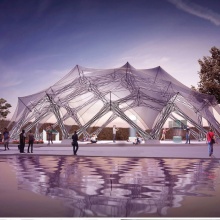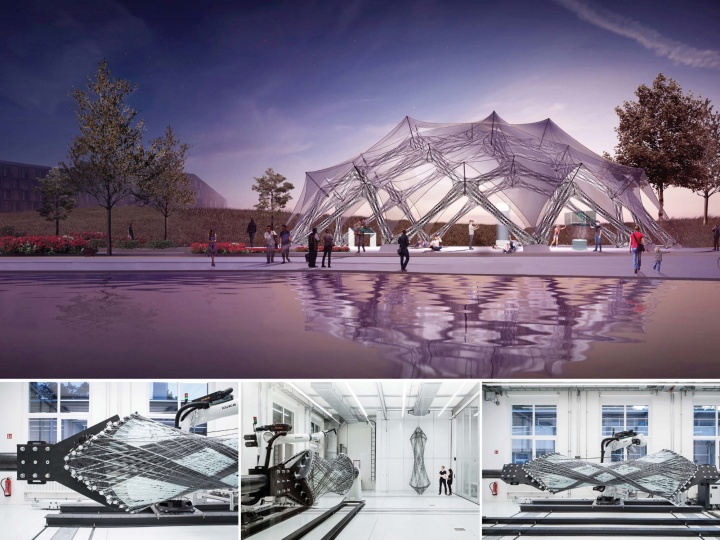The University of Stuttgart is developing two highly innovative, robotically-produced pavilions for the Bundesgartenschau horticulture show in Heilbronn. They are currently being built in the research laboratory of the University of Stuttgart (using the additive manufacturing process for load-bearing fiber composite components by means of robotic, coreless winding) and by the Müllerblaustein company in Blaustein (regarding the production of the load-bearing wooden elements for the wooden pavilion with the robotic platform TIM).
The pavilions
The BUGA wooden pavilion and the BUGA fiber pavilion are the continuation of a range of bionic test constructions built by the Institute for Computational Design and Construction (ICD) and the Institute for Building Structures and Structural Design (ITKE) at the University of Stuttgart, which conduct research into how construction and operating principles can be transferred from biology into architecture. The wide-spanned lightweight constructions, the only ones of their kind in the world, show how pioneering, high-performance lightweight buildings can be produced with an architectural impression which is both expressive and authentic.
In comparison to technical systems, biological structures generally have a much higher performance and material efficiency. By using computer-based planning methods and robotic manufacturing processes, the principle of morphological change and differentiation can be transferred to new kinds of lightweight constructions, which can span up to 30 meters unsupported. This makes plate structures an especially interesting type of construction. Biological examples are characterized by segments with specific functions and differentiated forms. For this reason, the draft, construction and production of segmented shell structures based on bionic principles has been the subject of research at the University of Stuttgart for a number of years. Both the shape of each segment as well as the design of a powerful connection are especially important here. The construction of the over 400 different segments which make up the wooden pavilion is very material-efficient, and consists of hollow caskets made out of plates and struts using a very precise, fully-automated robotic pre-production process.
The load-bearing construction of the fiber pavilion is made up exclusively of fiber composite components, the individual structures of which are manufactured from glass and carbon fibers in an additive, robotic manufacturing process. This makes it possible to specifically adapt the geometry and structure of the fibers for each one of the 60 components to meet the relevant requirements without needing to use molds and without creating any waste.
Detailed product description:




